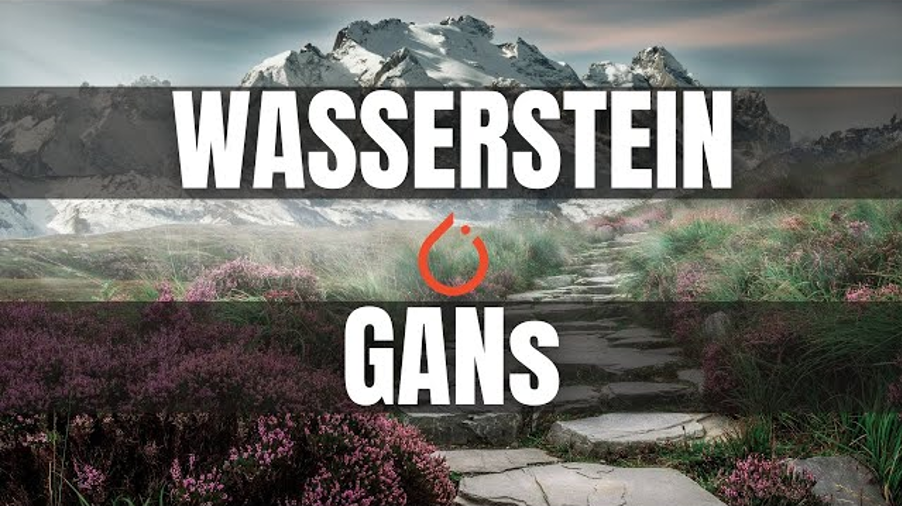The Breakthrough of WGAN-GP

In the field of artificial intelligence, an exciting breakthrough has opened doors to endless possibilities. It's called Generative Adversarial Networks (GANs) that has a remarkable ability to generate captivating images, fake data and many more. You may have already experienced the wonders of AI tools that produce new images and styles, but do you know that GANs are the driving force behind these creative tools? In this article, we embark our journey into the fascinating world of GANs, with a special focus on its remarkable variant WGAN-GP model. Now you will be able to guess that the black box algorithm in the below image is nothing but GANs.
UNDERSTANDING GANS :
Before diving into WGAN-GP, let’s briefly understand about GANs. GANs consist of two components: a generator and a discriminator. The generator generates synthetic data, while the discriminator evaluates the authenticity of both real and generated data. In the training process, the generator learns to create increasingly realistic samples while the discriminator becomes proficient at distinguishing between fake and real samples. This is the basic idea behind the GANs.
CHALLENGES WITH GANS :
GANs have shown great success in generating high-quality synthetic samples across various domains, but they also face challenges in training.
The main issues are :
- Mode collapse - the generator produces limited diversity of samples i.e., it produces limited and repetitive outputs.
- Training instability - the generator and discriminator fail to find an equilibrium making it highly sensitive to hyperparameter settings.
- Vanishing gradients – The gradients become too small during the training process.
- Difficulty in measuring convergence
To address these challenges, WGAN and WGAN-GP were introduced.
INTRODUCING WGAN-GP :
WGAN-GP was introduced by Arjovsky, Chintala, and Bottou in 2017 as a solution to some of the challenges faced by the traditional GANs.
THE POWER OF WASSERSTEIN DISTANCE :
The Wasserstein distance, also known as the Earth Mover's distance, offers a way to measure the dissimilarity between probability distributions. We will understand its significance using an example:
Imagine you have two distributions: one representing the colours of a sunrise and the other representing the colours of a sunset. The Wasserstein distance quantifies the minimal "cost" required to transform the sunrise distribution into the sunset distribution. It evaluates how much colour distribution must shift, providing an intuitive understanding of the difference between the two distributions. So, it is the minimum work required to transform one distribution to another. It aims to bring the generated data distribution closer to the real data distribution, leading to more realistic and diverse outputs.
Let’s look into the issues faced by traditional GANs and how WGAN-GP overcame them.
- Mode Collapse:
This arises when the generator produces limited variations of samples, often converging to a small set of modes in the data distribution. They struggle to capture the full diversity of the data. This issue arises due to the Jensen-Shannon divergence or the Kullback-Leibler divergence, which are used to measure the dissimilarity between the real and generated distributions in traditional GANs.
Solution:
WGAN-GP introduces the Wasserstein distance, which provides a more meaningful and continuous measure of dissimilarity. By minimizing the Wasserstein distance, WGAN-GP encourages the generator to capture a wider range of modes, leading to diverse and realistic outputs.
2. Vanishing Gradients and Training instability:
During the training process, the gradients can vanish or become extremely small, making it difficult for the generator to learn effectively.
Solution:
The introduction of gradient penalty in WGAN-GP helps overcome the vanishing gradient problem. The gradient penalty enforces the Lipschitz continuity constraint on the discriminator, ensuring that the gradients do not become too large or too small. It encourages the gradients to have a norm close to 1, enhancing training stability.
3. Difficulty in Measuring Convergence:
Commonly used metrics such as the Jensen-Shannon divergence or the Kullback-Leibler divergence are not well-suited for GANs due to their limitations, such as non-continuity and lack of meaningful distance interpretation.
Solution:
The Wasserstein distance employed in WGAN-GP provides a continuous and meaningful measure of convergence. As the Wasserstein distance decreases, it indicates that the generated distribution is getting closer to the real data distribution.
REAL WORLD IMPACT :
WGAN-GP has made a remarkable impact on various industries opening new doors for innovations and transforming the way we perceive. Let’s explore the real world impact of WGAN-GP:
- Image Synthesis: It is used to create lifelike visuals in areas such as computer graphics, virtual reality and video game development.
- Style Transfer: It allows users to apply the artistic style of one image onto another. It has practical applications in graphic design and photo editing.
- Data Privacy: By training generative models on sensitive data such as medical records, it is possible to generate synthetic data that retains important statistical properties while protecting the privacy of individuals.
- Text Generation: By training on large data, WGAN-GP can be employed to generate contextually relevant text enabling applications such as chatbots.
CONCLUSION :
Through the use of Wasserstein distance and gradient penalty, WGAN-GP has overcome various limitations and helps in generating high-quality and realistic content. With its stable training dynamics and remarkable outputs, it has reshaped the field of artificial creativity. It has led to an era where the lines between reality and imagination blur. These innovations will continue to pave the way for endless and generative possibilities.
REFERENCES :
- https://jonathan-hui.medium.com/gan-wasserstein-gan-wgan-gp-6a1a2aa1b490
- https://pyimagesearch.com/2022/02/07/anime-faces-with-wgan-and-wgan-gp/
- https://arxiv.org/pdf/1701.07875.pdf
- https://kowshikchilamkurthy.medium.com/wasserstein-distance-contraction-mapping-and-modern-rl-theory-93ef740ae867
ALSO CHECKOUT :
- Curious about the different roles and career paths in data science, refer to this link for an in-depth exploration.
- Want to explore more such insightful articles then don’t forget to check this link.
- Check this link to explore a testing company.
By Soumya G